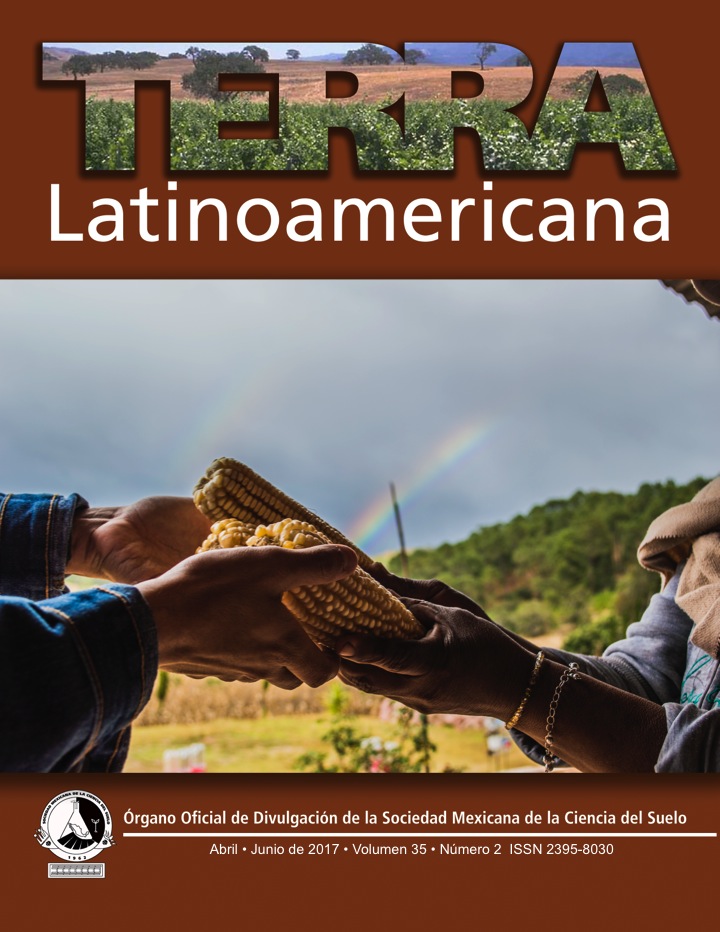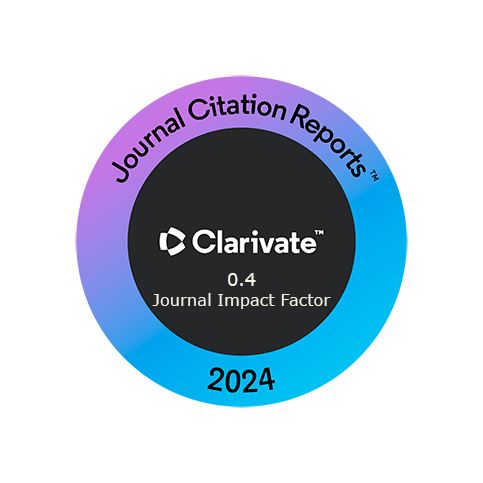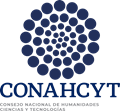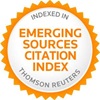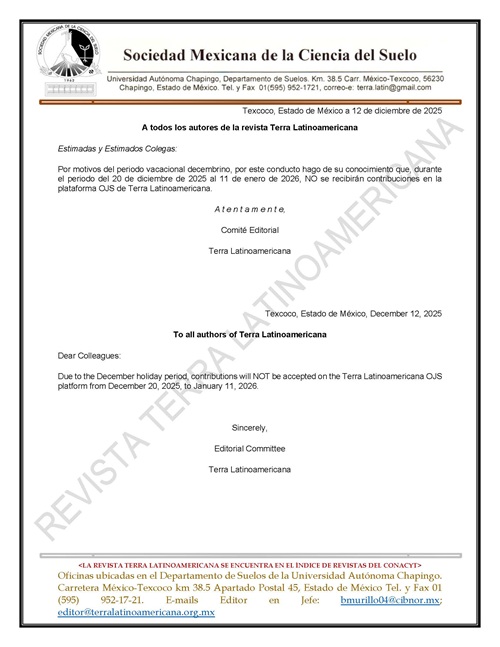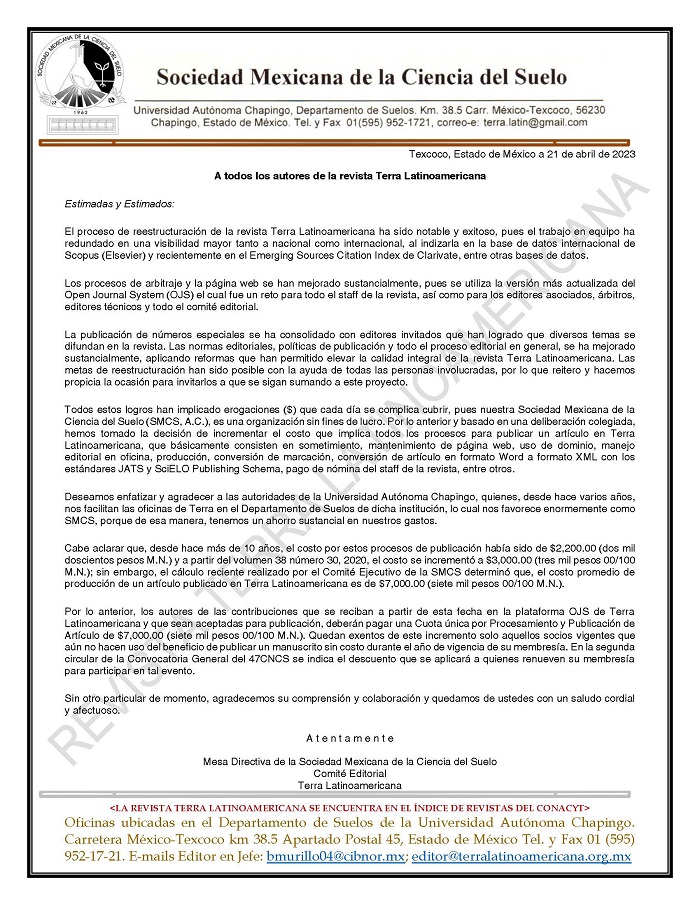Presence in soil and plants of potential agents causing human subcutaneous infections in the state of Puebla, Mexico
DOI:
https://doi.org/10.28940/terra.v35i2.139Keywords:
Fonsecaea pedrosoi, Sporothrix schenckii, Madurella spp., Nocardia brasiliensis, actinomycetes, subcutaneous mycosisAbstract
Microscopic fungi and actinomycetes associated with human infections are widely distributed in nature. Soil and plants are the habitat of numerous fungi and bacteria. Farmers are highly vulnerable as they often sustain wounds contaminated by these microorganisms. In order to determine the number of natural colonies of fungi and actinomycetes that cause human subcutaneous infections, the respective microorganisms from soil and plants in 11 municipalities in the State of Puebla were isolated. Fifty samples from each municipality were taken, each consisting of 10 g of soil and 10 g of leaves of the nearest plant. Suspensions were prepared, inoculated on Sabouraud dextrose agar, incubated at 28 °C, and periodically examined to identify the microorganisms of interest based on their morphological characteristics. Of 1100 samples processed, 441 isolates were obtained, of which 281 were fungi (133 from soil and 148 from plants) and 160 were actinomycetes (96 from soil and 64 from plants). Fungi were identified by their macroscopic and microscopic morphology. Actinomycetes were identified by their macroscopic and microscopic morphology, and by biochemical tests. The main microorganisms isolated were agents of chromoblastomycosis (Fonsecaea pedrosoi and Cladophialophora verrucosa), followed by the agent of sporotrichosis (Sporothrix schenckii) and agents of actinomycetoma (Nocardia brasiliensis and N. otitidis-caviarum). The soil and plants from Cholula and Tecali de Herrera had the highest density of fungal isolates. From the soil and plants in Chignahuapan and Izúcar de Matamoros the highest number of actinomycetes was obtained. In soils from 11 municipalities in the state of Puebla, we found a high diversity of fungi and actinomycetes that cause subcutaneous infections in humans in plants and in proportions similar to the frequency of the respective pathologies reported in the Mexican literature.Downloads
Publication Facts
Reviewer profiles N/A
Author statements
- Academic society
- Terra Latinoamericana
- Publisher
- Mexican Society of Soil Science, C.A.


